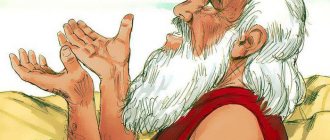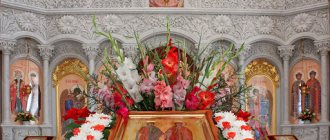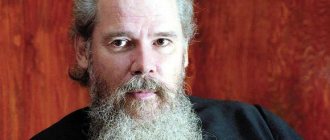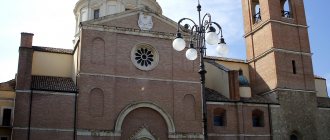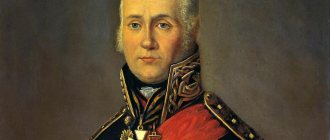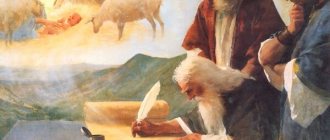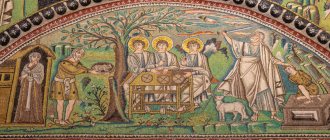Abraham Palitsyn took part in the work of the Zemsky Sobor in 1613. At the council, the first Russian Tsar from the well-known Romanov family was elected. Then Mikhail Fedorovich Romanov reigned.
All this could have greatly simplified Abraham’s situation, but this did not happen, since the elder decided to return to where his spiritual career began, where he became a monk - to the Solovetsky Monastery.
Abraham Palitsyn - author and publicist, as well as cellarer of the Trinity-Sergius Lavra
Few people know about such a famous author and publicist as Abraham Palitsyn. This man wrote quite famous tales, in which he himself took part as a warrior.
Abraham Palitsyn was born in the village of Protasyev near Rostov in 1550
Who is he? Abraham was born in the village of Protasyev near Rostov in 1550. This is the approximate year of his birth, since the real one is unknown. This man came from an old and serving noble family. A little later, Abraham served as a governor in Kola.
Around 1587 he fell into disgrace. Then his life changed greatly, as he was exiled to the Solovetsky Monastery, where he was tonsured a monk. Many researchers believe that such a turn in Palitsyn’s fate is connected with Vasily Shuisky. His name was said to be associated with an unsuccessful plot.
Many claim that the life of Abraham Palitsyn was closely connected with Vasily Shuisky. Historians claim that Vasily was associated with an unsuccessful plot attempt against Abraham
After being tonsured as a monk, Abraham’s situation immediately improved. He moved to the Trinity-Sergius Monastery, where he later became a cellarer.
When the Poles attacked, Abraham was in Moscow and helped the besieged people. In 1610, when Vasily Shuisky fell, cellarer Abraham and the Moscow embassy went to Prince Vladislav to ask him to take the throne.
During this trip, Abraham was able to receive many benefits that the monastery had.
Cellarer
head of the monastery table, meals and supplies of the monastery.
After this, Abraham immediately left and did not wait for the prince’s answer. He did not notify anyone of his departure. Many historians are still discussing this point. Why did he do this, what prompted him to leave without warning?
In 1611, Abraham decided to turn to journalistic activity
In 1611, Abraham decided to turn to journalistic activity. With the help of the cellarer of the Trinity-Sergius Lavra, the monastery began to send letters to troubled cities. The letters stated that everyone should unite to fight the enemy. The letter also called on everyone to provide all possible support to the First Militia.
Unfortunately, only three letters have survived to this day. They were written from June 1611, from October of the same year, and from April 1612.
After 1611, Abraham wrote letters to troubled cities to unite everyone to fight the enemy
It is also worth mentioning that Abraham Palitsyn took part in the work of the Zemsky Sobor in 1613. The first Russian tsar from the well-known Romanov family was also elected at the council. Then the accession of Mikhail Fedorovich Romanov took place.
Abraham Palitsyn participated in the Zemsky Sobor, when the first Russian Tsar, Mikhail Fedorovich Romanov, was elected
The life of Abraham Palitsyn ended on September 23, 1626 or in 1627.
Radimov P. Siege of the Lavra.
There is no end to the siege. Sapega is relentless. And in the Lavra the disease—scurvy—kills the defenders. The sunset has already faded. It’s an alarming hour for the night, There’s a tunnel under the tower, and the Poles are drilling into the ground, But the watch heard, and the alarm is not noisy. Here, having crossed themselves in the name of God, Two formidable fighters with a lit fuse descend into the dug passage to meet them with an underground rustle, they will not accept the beating, They will quickly reach the barrel of gunpowder with fire. Now the fuse is already lit - and a menacing thunder crashes. Death has been ordered for everyone, and it is not far away. Instantly a landslide rushed in, and a heavy clod crushed And crushed the enemies’ heads, chests, and shoulders.
Sources (for classes of the scientific circle of schoolchildren and students):
Abraham Palitsyn left behind a worthy literary legacy
Let's take a closer look at his literary heritage. The legacy of Abraham Palitsyn includes three letters that were drawn up together with Archimandrite Dionysius.
And also his “History in memory of the previous generation.” This story consists of 77 chapters, which are roughly combined into three parts. In May 1619, the editing of the initial chapters of this story began. The final version was published by 1620.
What did Abraham Palitsyn write about in this story? In his first chapters, he talked about the events and death of Ivan the Terrible. The second part is dedicated to the Siege of the Trinity-Sergius Monastery. The third part is like a laconic narrative about the events of subsequent years.
Notes[edit | edit code]
Comments[edit | edit code]
- Under the indicated title, that part of the “History ...”, which is dedicated to the Trinity Siege, and the entire work were published.
Sources[edit | edit code]
- ↑ 12345
Kedrov, 1880, p. 10. - ↑ 123456
Solodkin, 1992, p. 36. - ↑ 123456
Odessky, 1994, p. 112. - ↑ 1234567891011121314
PE, 2000, p. 170. - Now - Borisoglebsky district, Yaroslavl region, Russia.
- Bolkhovitinov, 1818, p. 1.
- Chichagov, 1848, p. 3.
- Kedrov, 1880, p. 7.
- Kedrov, 1880, p. 13.
- ↑ 1234
KLE, 1962. - Kedrov, 1880, p. 16.
- Kostomarov, 1912, p. 571.
- ↑ 123
Solodkin, Filaret, 2004, p. 165. - ↑ 123
Kostomarov, 1912, p. 572. - Solodkin, 1992, p. 37.
- ↑ 12
Belobrova, 1992, p. 275. - Klyuchevsky V. O.
Course of Russian history in 5 parts. - St. Petersburg, 1904-1922. — 1146 p. - Andreev, 1983, p. 295.
- Legend of Abraham Palitsyn, 1822, p. 1.
- TODRL, volume 32, 1977, p. 300.
- ↑ 123
Solodkin, 1992, p. 38. - ↑ 123
Platonov, 1888, p. 172. - ↑ 12
Derzhavina, 1968. - Platonov, 1888, p. 168.
- Abraham Palitsyn / V. D. Nazarov. // Great Soviet Encyclopedia: [in 30 volumes] / ch. ed. A. M. Prokhorov. — 3rd ed. - M.: Soviet Encyclopedia, 1969-1978.
- Karamzin, 2004, p. 869.
- Novikov, 1951, p. 333.
- ↑ 12
Platonov, 1888, p. 170. - ↑ 12
Kostomarov, 1912, p. 576. - Platonov, 1888, p. 169.
- PBE, 1900, p. 223-224.
- N. Shafer. “Minin and Pozharsky” (comments on the libretto)
- Vishnevsky V. E.
Feature films of pre-revolutionary Russia: filmographic description / All. state Institute of Cinematography "VGIK". Film studies room. - M.: Goskinoizdat, 1945. - P. 34. - 192 p. — 2000 copies.
The legend of the siege of the Trinity-Sergius Monastery is an independent and independent composition
The second part of his work “On the siege of the Trinity-Sergius Monastery” is an independent essay, which has its own plot, introduction and ending. This work became extremely popular in the 17th-19th centuries.
Many historians have argued that it was this tale of Abraham Palitsyn that became the most striking literary work of the Time of Troubles.
The tale of Abraham Palitsyn about the siege of the Trinity-Sergius Monastery is the best and brightest work of the Time of Troubles
In this legend, Abraham Palitsyn described the circumstances of the defense of the monastery of the Trinity-Sergius Lavra from the Polish people. In the essay he also described his personal exploits.
This is a legend about what happened in the house of the Most Holy and Life-Giving Trinity, and how, through the Intercession of the Most Holy Lady Theotokos and through the prayers of the great wonderworkers Sergius and Nikon, this monastery was delivered from Polish and Lithuanian people and Russian traitors, the same cellarer, monk Abraham Palitsyn.
In the third chapter, Abraham talks about how bandits began throughout Russia:
“... Tsar Boris desecrated all his tribute with unrighteous profit, innkeepers for drunkenness and murder and fornication in all cities in order to purchase high the price of taverns. And there were too many ransoms, so he gave alms and built churches; and mixing an oath with a blessing, and overcoming malice with piety. And for the sake of all the deeds that Boris has done, such people are hated by the whole world...”
Abraham Palitsyn
writer
In the first chapters, Abraham Palitsyn talks about Boris Godunov
In the fourth chapter, Abraham says that Prince Boris Godunov dies, and Dmitry ascends to the kingdom:
“... Tsar Boris, even if it wasn’t because of him, was killed, but during the untruth of Grigoriev’s planned composition, he was cut off by a quick death in the summer of 7113 (1605); and all who trusted in them were scattered from his house. The same monk, after his death in the same year, ascends to his kingdom, calling himself Demetrius; We know from many that Gregory is a monk, although he will strengthen himself as king in Russia...”
Abraham Palitsyn
writer
The eighth chapter is devoted to the story of how long the Trinity-Sergius Monastery was under siege
The eighth chapter is devoted to the story of how long the Trinity-Sergius Monastery was under siege. He also talks about how strong the help was at that time from the wonderworker Sergius and Nikon:
“...Great then is the benefit for the reigning city to come from the monastery of the miracle worker Sergius for the sake of his holy prayers: for the people who live at the edges of the Frozen Sea of the Ocean to the sea at fullness proclaim and facilitate all providence for the kingdom. From the Great Novagrad and from Vologda and along the Dvina River to the sea and to the east, the entire Siberian land and beyond it all contribute to Moscow. It’s the same from the Nizhny Novgorod land and from Kazan, everyone always serves and from all those foretold places, when someone has nowhere to go, then everyone flows to the monastery of the miracle worker...”
Abraham Palitsyn
writer
The eighth chapter of the legend tells how the siege of the monastery began and how long it lasted.
In chapter 10 he talks about the arrival of Polish people and Russian traitors to the monastery:
“...In the summer of 7117 (1609), in the kingdom of the blessed and Christ-loving Tsar and Grand Duke Vasily Ivanovich of All Russia and under the Holy Patriarch Hermogenes of Moscow and All Russia, the Most Holy and Immemorial Trinity of the Sergius Monastery under Archmarite Jasaph and under the cellar elder Abraham fell itsyne I have forgiven God for our sins, on the 23rd day of September, at the conception of the honorable and glorious Prophet and Forerunner of the Baptist of the Lord John, the Lithuanian Hetman Peter Sapeha and Pan Alexander Lisovskaya came near the Trinity Sergius Monastery with the Polish and Lithuanian people and with the Russian traitors along the Moscow road ... " .
Abraham Palitsyn
writer
In chapter 11 of the legend, Abraham Palitsyn spoke about a vision of a pillar of fire, which was not in a dream, but in reality. Further chapters are devoted to the beginning of the shooting, the Lithuanian raid, and the capture of the Lithuanian people.
Literature[edit | edit code]
- A. S.
Kelar of the Trinity-Sergius Lavra Abraham Palitsyn, famous figure, associate and defender of the Russian land in the dark era of impostors. - SPb.: Type. K. Kraya, 1850. - 30 p. - Abraham // Brief literary encyclopedia / Ch. ed. A. A. Surkov. - M.: Soviet Encyclopedia, 1962. - T. 1. Aarne - Gavrilov.
- Abraham (Palitsyn Averky Ivanovich) // Orthodox Encyclopedia / Ed. Patriarch of Moscow and All Rus' Alexy II. - M.: Church-scientific, 2000. - T. I. - P. 170-171. — 752 p. — 40,000 copies.
- Andreev I. L.
Introduction [to the section “In memory of future births”] // Stand together. - M.: Young Guard, 1983. - P. 289-299. — 495 p. — (History of the Fatherland in novels, stories, documents). — 200,000 copies. - Andronik (Trubachev).
Will shine in hearts // Sergius of Radonezh: Sat / Comp. V. A. Desyatnikov. - M.: Patriot, 1991. - P. 453-458. — 540 s. — 100,000 copies. - Belobrova O. A.
Dionisy Zobninovsky // SKKDR. - St. Petersburg: Nauka, 1992. - T. 3/1. — P. 274—276. — 410 s. — 5000 copies. - Vengerov S. A.
Sources of the dictionary of Russian writers. - SPb.: Type. Imp. Academy of Sciences, 1900. - T. 1. - P. 12. - 814 p. - Derzhavina O. A.
An Old Russian Tale // Brief Literary Encyclopedia / Ch. ed. A. A. Surkov. - M.: Soviet Encyclopedia, 1968. - T. 5. Murari - Chorus. - Evgeny (Bolkhovitinov).
Avraamy Palitsyn // Historical Dictionary about writers of ecclesiastical rank who were in Russia. - SPb.: Type. N. I. Grecha, 1818. - T. 1. - P. 1-7. — 346 p. - Karamzin N. M.
History of the Russian State. - M.: Eksmo, 2004. - 1024 p. — 8000 copies. - Kedrov S. I.
Abraham Palitsyn. - M.: Society of Russian History and Antiquities at Moscow. Univ., 1880. - 202 p. - Kedrov S.I.
Abraham Palitsyn // Orthodox Theological Encyclopedia. - Petrograd, 1900. - T. I. A - Archelaus. - Klyuchevsky V. O.
I. Timofeev, Prince. Khvorostinin and A. Palitsyn // Works: In 9 volumes - M.: Mysl, 1989. - T. VII. — P. 166-177. — 508 p. — 250,000 copies. - Kostomarov N.I.
Trinity Archimandrite Dionysius and cellarer Avramy Palitsyn // Russian history in the biographies of its most important figures. — Ed. 6th. - SPb.: Type. M. M. Stasyulevich, 1912. - T. 1. - P. 569-576. — 594 p. - Novikov N.I.
Experience of a historical dictionary about Russian writers // Selected works. - M.-L.: Goslitizdat, 1951. - P. 277-370. — 744 p. — 30,000 copies. - Odessky M.P.
Palitsyn Abraham // Literature and culture of Ancient Russia: Dictionary-reference book. - M.: Higher School, 1994. - P. 112-113. — 334 p. — 25,000 copies. — ISBN 5-06-002874-7. Archived January 26, 2018 on the Wayback Machine - Platonov S.F.
Old Russian tales and stories about the Time of Troubles of the 17th century as a historical source. - SPb.: Type. V. S. Balashova, 1888. - 372 p. - Solovyov S. M.
Russian confessors of enlightenment in the 17th century // Readings and stories on the history of Russia. - M.: Pravda, 1989. - P. 403-413. — 768 p. - Solodkin Ya. G.
Abraham (in the world Averky Ivanov Palitsyn) // SKKDR. - St. Petersburg: Nauka, 1992. - T. 3/1. — P. 36—44. — 410 s. — 5000 copies. - Solodkin Ya. G.
How the “History” of Abraham Palitsyn was created (polemical notes) // Bulletin of Nizhnevartovsk State University. - Nizhnevartovsk: Nizhnevartovsk State University, 2009. - No. 2. - P. 40-47. - Solodkin Ya. G.
On the dating of the initial chapters of “History” by Abraham Palitsyn // TODRL. - L.: Nauka, 1977. - T. 32. - P. 290-304. — 408 p. - Solodkin Ya. G.
Filaret (in the world Fedor Nikitich Romanov-Yuryev) // SKKDR. - St. Petersburg: Nauka, 2004. - T. 3/4. — P. 161—168. — 889 p. — 1500 copies. - Chichagov N.P.
The life of Prince Pozharsky, cellarer Palitsyn and citizen Minin. - SPb.: Type. Min-va internal affairs, 1848. - 162 p.
Chapter 38 of the legend reports the appearance of Nikon the Wonderworker
Chapter 38 reports on the appearance of Nikon the Wonderworker:
“...I have not yet ceased from the wrath of God and have been overcome by many sorrows of infirmity, and the great miracle worker Nikon appears in a dream to the sexton Ilinarch, saying to his mother: “Command to sick people: behold, snow will fall this night, and those who want to receive healing, let them rub themselves with that newly fallen snow.” ! Shout out to all people, as Nikon said behold!” Ilinarch, having risen up, trembled and led all people in his spirit. And according to the verb of the miracle worker Nikon, new snow fell; and those who eat this faith and rub themselves against the snow, and from those many you will receive health...”
Abraham Palitsyn
writer
In chapter 45 we find the very first poem written in Ancient Rus'. This chapter is a vivid example of the verbal art of Abraham Palitsyn.
A summary of the legend of Abraham Palitsyn can be read on the website of the Holy Trinity Sergius Lavra.
In places, something involuntary is felt in the legend, perhaps this is a desire to justify oneself and give contemporaries and posterity a different idea of Palitsyn’s personality.
"The Legend" of Abraham Palitsyn on the website of the Holy Trinity Sergius Lavra"
The style of his tale is replete with small but original expressions. We see all this in the example of the above moments from the legend.
The legend also reflects the personality of Palitsyn himself due to his extraordinary mind. He is filled with good intentions, as well as love for his fatherland.
By leaving a comment, you accept the user agreement
